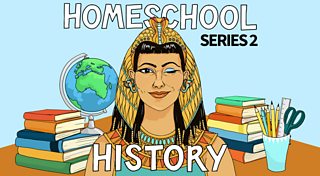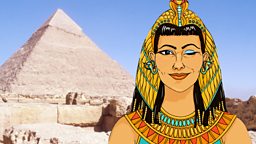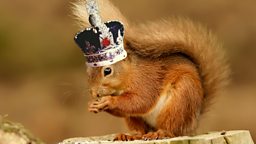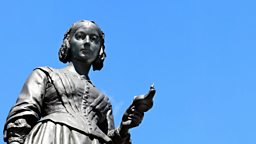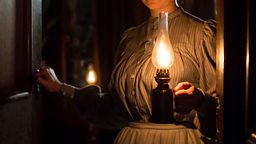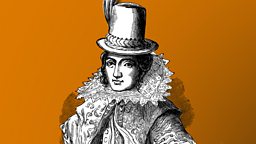Six of history’s most inspirational womenÂ
On International Women’s Day, we celebrate the lives of six extraordinary women from history whose amazing stories have been covered by Greg Jenner’s show for younger listeners, Â鶹ԼÅÄschool History, or on his grown up show You’re Dead to Me. Across both these shows, the eventful lives of these women have been put into the spotlight to draw out their positive and inspiring legacy.
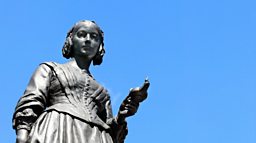
Florence NightingaleÂ
Florence Nightingale is not only the world’s most famous nurse – she was also responsible for pioneering changes to healthcare, and helped transform nursing into the respected and vital profession we rely upon today.
Her well-documented service during the Crimean War involved a struggle against disgusting conditions. The barracks hospital where she worked was covered with blood, urine and faeces, and infested with rats and lice. Florence fundraised for supplies – with those contributing including the author Charles Dickens – to make sure conditions were as sanitary as possible. It was during this time that she became known as "The Lady with the Lamp" for her regular nighttime tours of the hospital.
Florence’s famous "Notes on Nursing manual", published in 1859, shared guidelines that proved pivotal to the future planning of hospitals. The following year, Florence set up the Nightingale School of Nursing, the first training school for nurses.

What would Florence Nightingale make of big data?
Florence Nightingale on big data (it's not as random as it sounds)
Mary Seacole
Many people know of Florence Nightingale’s activities during the Crimean War, but until recently, less was known about those of healer and nurse Mary Seacole. Mary has become synonymous with perseverance, shown both in the face of dangerous conditions but also of racial prejudice.
Mary has become synonymous with perseverance.
Taught traditional healing skills by her mother in Jamaica, Mary travelled widely and complemented her knowledge of traditional medicine with European medical ideas.
After the death of her husband, Mary made a return trip to England, in 1854, and requested that the War Office send her to the Crimea. She was refused, but Seacole funded her own trip to the Crimea anyway. She started the "British Hotel", close to the front line, and was adored by the soldiers there who called her "Mother Seacole".
Josephine Baker
Josephine Baker was once the best paid performer in the world, but her legacy is more about female emancipation and civil rights than wealth.
She was put to work at a young age and the family home in St. Louis was burned down in a race riot in 1917, when Josephine was 11. Just two years later, Josephine made the first, brave, steps towards a career dancing in revues, first in New York and then in Paris.
Josephine’s exuberant, liberated style won many plaudits and she was celebrated in France, where she became a citizen. With France’s occupation by the Nazis in 1940, Josephine led a double life. She was still a star able to afford extravagant riches (you can hear about how eclectic her tastes were here), but she was also an active member of the French Resistance.
When Josephine returned to the US, she became an outspoken civil rights activist, losing her citizenship for a time. Her iconic status attracted admirers including Fidel Castro, Eva Peron and Grace Kelly, to name but a few.
Mary Anning
Now immortalised by Kate Winslet in the film Ammonite, Mary Anning was a determined and clever woman who became known as the "Princess of Palaeontology" and the greatest fossil hunter who ever lived.
Mary’s hometown of Lyme Regis was a good place for Mary to cultivate an interest in geology and palaeontology, as fossils were – and are still – found in abundance there. When she was 12, in 1811, she had her first big find – a skeleton of an ichthyosaur (a prehistoric sea reptile), the first of its kind ever found. Many more discoveries followed, including, when she was 24, that of a plesiosaur, a type of marine reptile.
This discovery put Mary on the map as far as the scientific community was concerned but, even so, her gender and social class prevented her from receiving significant financial gain from her work, and proper recognition of her discoveries only came after her death. However, her memory lives on, as Kate Winslet’s film epitomises, as also does her recognition by the Royal Society of Science, in 2010.
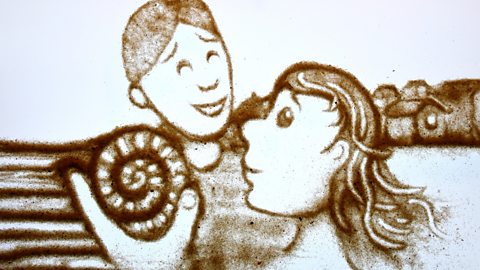
The woman who helped discover dinosaurs
The story of paleontologist Mary Anning - told in a beautiful sand animation.

Harriet Tubman
Harriet Tubman’s actions against slavery and her single-mindedness secured her place in history as a feminist icon for black and white women alike.
Harriet managed to flee slavery and to start to organise against it, helping to set up various abolitionist networks.
Born in 1822 in Maryland, Harriet Tubman came from a large family but some of her siblings and her mother were sold to different slave owners, so she never enjoyed a settled family life. Harriet managed to flee slavery and to start to organise against it, helping to set up various abolitionist networks and freeing between 70 and 100 people, including her brother, sisters and cousins.
When the American Civil War broke out, Harriet helped fugitive slaves by passing on skills to families to use after the war. Harriet was a multi-talented woman and also the first woman in American history to lead troops in battle, with her active service including the "Raid at Combahee Ferry" that involved the rescue of 750 former slaves.
Listen to this episode of You’re Dead To Me to discover more about Harriet Tubman.

How did Harriet Tubman escape slavery?
A clip from You're Dead To Me.
Mary Shelley
Published in 1818, Mary Shelley’s Frankenstein is considered to be the first-ever science fiction story. Mary was only 20 when she wrote this classic, but her genre-busting prose and visionary themes were the product of an already chaotic and adventurous life.
Published in 1818, Mary Shelley’s Frankenstein is considered to be the first-ever science fiction story.
She was born in 1797 in London to radical anarchist philosopher William Godwin and fellow philosopher and women’s rights activist Mary Wollstonecraft, who died soon after. When Mary was 16, she started dating the radical, free-thinking – and free-loving – poet Percy Bysshe Shelley. An emotional rollercoaster and a life in the creative fast lane soon followed.
As well as Frankenstein, with its warning about how outcasts are brutalised by society, Mary wrote a number of other novels including The Last Man, an apocalyptic work, ahead of its time, with its themes of environmental catastrophe – a huge break with romantic ideas of the time.
Listen to the You’re Dead To Me episode about Mary Shelley.
